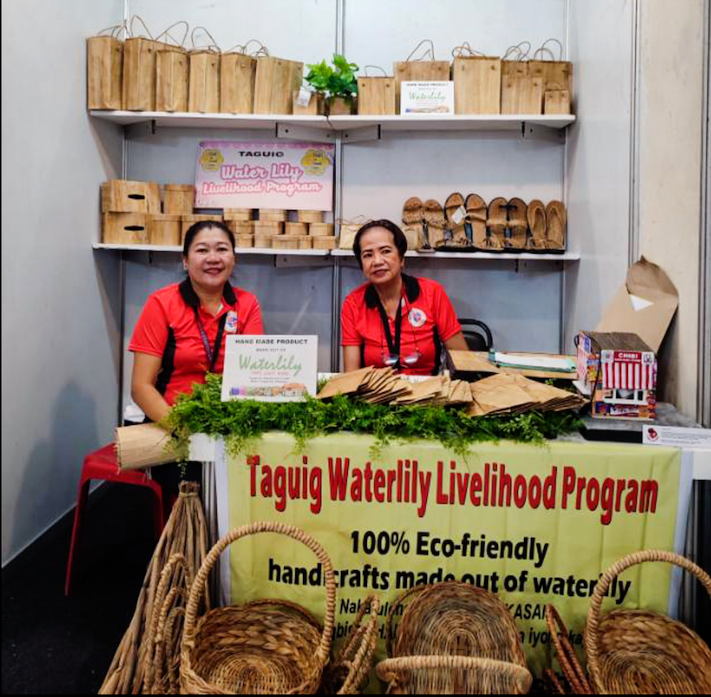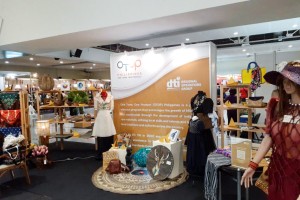The National Arts and Crafts Fair is open to the public at the Megatrade Halls 1-3 in SM Megamall, Mandaluyong City, until October 8. (Photo courtesy of DTI-NCR)
The Department of Trade and Industry (DTI) has rekindled the spirit of creativity, culture, and commerce after bringing together over 200 micro, small, and medium enterprises (MSMEs) from 17 regions of the Philippines for the much-anticipated return of the National Arts and Crafts Fair (NACF).
After a three-year hiatus, this flagship event is making a comeback, showcasing the rich cultural heritage of indigenous crafts, arts, and traditions.
A Celebration of Craftsmanship and Tradition
The NACF, initiated by Senator Loren Legarda in 2016, serves as a national platform dedicated to celebrating the unique creative industries of the Philippines. This event not only preserves cultural heritage but also promotes economic viability for local artisans and indigenous communities.
This year's fair features a diverse array of handcrafted and handwoven products. It is open until October 8, at the Megatrade Halls 1-3 in SM Megamall, Mandaluyong City.
From traditional Philippine fabrics to contemporary interpretations, visitors can explore a treasure trove of handmade ornaments, handcrafted jewelry, woven apparel, and home décor.
Supporting MSMEs and Indigenous Communities
With 200 carefully selected MSME participants, the NACF aims to provide a platform for these entrepreneurs to showcase their craftsmanship and heritage. Beyond economic empowerment, the fair will also offer educational events for visitors, including workshops, demonstrations, and interactive exhibitions. These activities provide a deeper understanding of the cultural value embedded in the Philippines' artistic traditions.
Dedicated talks and sessions will equip aspiring entrepreneurs with vital tools and business insights, fostering growth and sustainability in the industry. Moreover, the NACF will host representatives from various Schools of Living Traditions worldwide, offering a comprehensive look at the diverse cultural treasures of the Philippines and beyond.
A Legacy of Success
From 2016 to 2019, the NACF generated impressive revenues of P114 million for its exhibitors, demonstrating the event's economic impact and potential. The fair's success is attributed to its commitment to supporting local artisans and indigenous communities while preserving and promoting the nation's cultural heritage.
Collaborative Efforts for a Brighter Future
The NACF is organized by the DTI – Bureau of Domestic Trade Promotion (BDTP) and the DTI Regional and Provincial Offices, in collaboration with the Design Center of the Philippines (DCP) and the National Commission for Culture and the Arts (NCCA). Senator Loren Legarda's Office of Senate President Pro Tempore also plays a pivotal role in this initiative.
The return of the NACF promises to be a vibrant celebration of Philippine culture, craftsmanship, and entrepreneurship. It underscores the importance of preserving traditions, empowering MSMEs, and providing a platform for artisans to thrive, ensuring a brighter future for the nation's creative industries.
Empowering Women and Preserving Tradition

The fair also highlights an extraordinary initiative, one that empowers women, preserves cultural heritage, and transforms humble water lilies into exquisite works of art.
The Taguig City Government's Water Lily Weaving Livelihood Program has become a shining example of sustainable livelihood and community empowerment. Their products are made available in one of the over 200 booths.
Nurturing Talent and Tradition
Taguig's journey into water lily weaving began in October 2008, when the local government embarked on a mission to train women from the city's 28 barangays. These women, often the unsung heroes of their communities, were introduced to a world of creativity and craftsmanship that transformed their lives.
The training program encompasses various production processes, starting with the delicate art of harvesting, drying, and preserving water lilies. From there, participants delve into the actual weaving process, learning techniques that have been passed down through generations.
The journey doesn't end there; it includes trimming, blow torching, gluing, dyeing, and varnishing, turning raw water lilies into a diverse array of products.
From Water Lilies to Works of Art
Over the years, the Water Lily Weaving Livelihood Program has not only equipped women with valuable skills but has also helped them create a sustainable source of income. The results speak for themselves, with millions of pesos worth of water lily products finding their way into the market.
From sandals and shoes to handbags and shoulder bags, these women have embraced their creativity to produce personal accessories that blend style with sustainability. Beyond fashion, their craftsmanship extends to household products, including beautifully woven rags, place mats, and even fruit trays. Each product is a testament to the dedication and artistry of these skilled artisans.
Community Partnerships for a Brighter Future
The success of Taguig's Water Lily Weaving Livelihood Program isn't a solitary effort. It is a testament to the power of collaboration between the city government, non-government organizations, and people's organizations. This partnership has created a nurturing environment where skills are cultivated, traditions are preserved, and livelihoods are improved.
In an era when preserving tradition and empowering communities are paramount, Taguig's water lily weavers stand as a symbol of resilience and ingenuity. Their journey from water lilies to works of art is a reminder of the untapped potential that exists within our communities, waiting to be harnessed.
As the program continues to flourish, it not only empowers women but also ensures that the rich tradition of water lily weaving continues to thrive in Taguig. It is a story of hope, resilience, and the transformative power of skills, showcasing how a simple water lily can become a symbol of empowerment and cultural preservation. (PIA-NCR)



